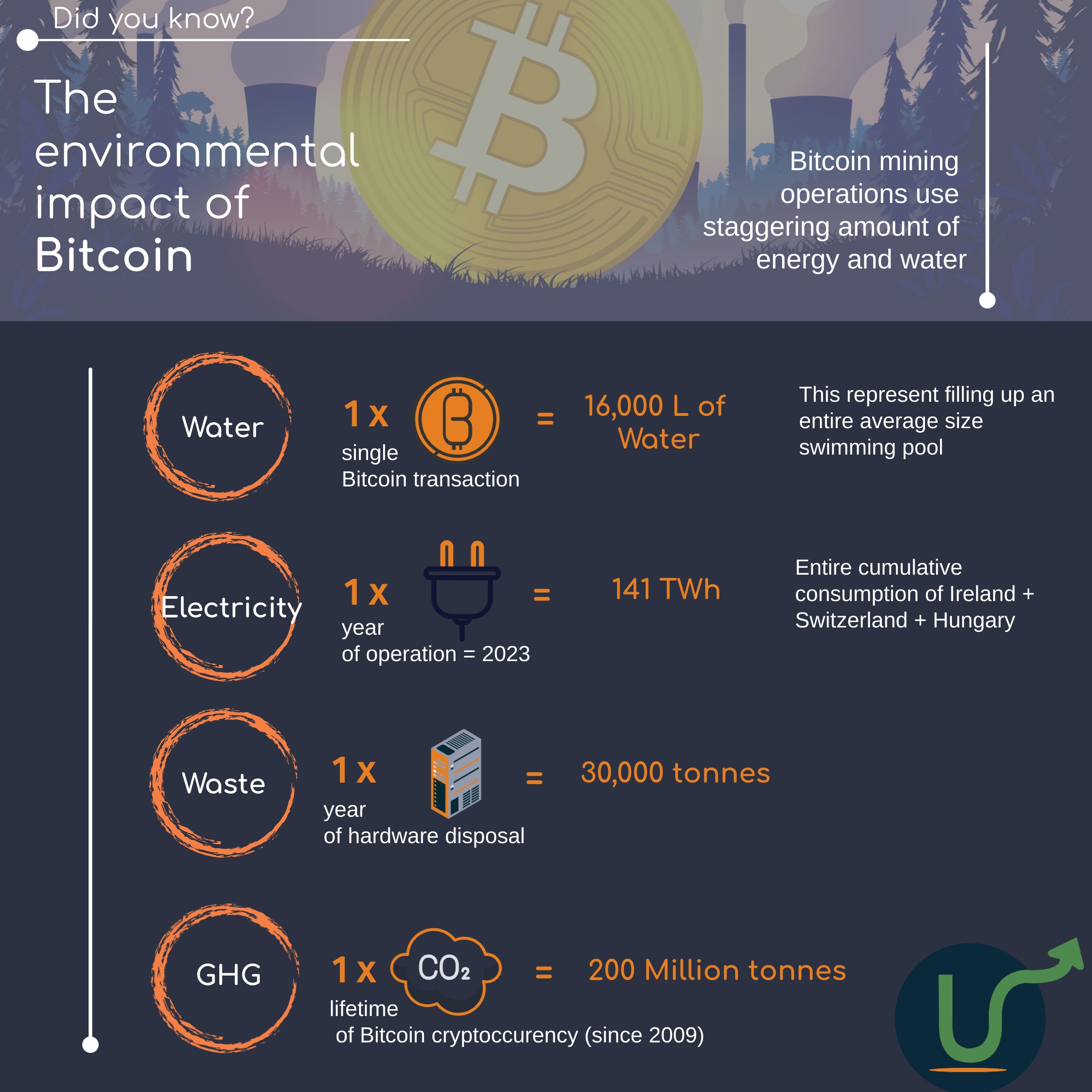We often think of digital technology as invisible and clean—but it’s not. The digital world is responsible for around 4% of global greenhouse gas emissions, a figure expected to rise to 14% by 2040. And while emails, streaming, and cloud storage all play a part, few digital activities are as energy- and resource-intensive as Bitcoin.
Bitcoin is a powerful lens through which to examine our digital footprint. Its energy use is staggering—each transaction consumes over 1,000 kWh, equivalent to 700,000 Visa payments or 50,000 hours of YouTube. It also requires 16,000 litres of water per transaction, enough to fill a swimming pool. Since Bitcoin’s inception, it’s generated over 200 million tonnes of CO₂, with 92% of that released in the past four years.

In 2024, Bitcoin consumes around 0.7% of global electricity—and a startling 2.3% of US electricity. In some regions like Texas, Bitcoin mining has raised energy prices and triggered policy pushback. With a 27% annual growth rate, the trend is worrying.
It doesn’t have to be this way. In 2022, Ethereum shifted to a more efficient consensus mechanism (Proof of Stake), slashing its energy use by 99.9% overnight. Other emerging cryptocurrencies, like EcoCoin, are being designed with sustainability at their core. But Bitcoin’s decentralised structure and security model have so far resisted such change.
Now, AI is following a similar path—exploding in popularity and energy demand. Major AI systems like ChatGPT or Google Gemini require massive computing power and cooling, leading to large carbon and water footprints. Some AI companies have revised their net-zero pledges as their emissions balloon. Like with Bitcoin, not all AI is equal—some models are vastly more efficient, and some data centres (like Switzerland’s Infomaniak) run entirely on renewables.
So what can we learn?
Digital technology has great potential for climate solutions, from smart farming to biodiversity monitoring. But unless we embed sustainability into design and policy, digital tools may become part of the problem..
Digital transformation can serve people and planet—but only if we stay conscious of its cost
We must promote digital sobriety—using only what’s needed, training teams on cloud use, reducing e-waste, and choosing sustainable tech providers. After all, one laptop requires 800 kg of resources to manufacture, yet only 17% of e-waste is currently recycled.
Here are some initial steps you can take
- Promote Digital sobriety is not only better for the environment, it is also better economically. 30% of Cloud storage is unused or unnecessary, and you pay for it no matter what.
- Start small – Look at Ecosia for your default search engine. Ecosia also offers way for you as a business to contribute to some impactful forestation projects, it uses a fraction of Google search and does not use AI.
- Is your IT team trained? IT or software development teams can design future system with sustainability in mind from scratch. Equip them to do so, and consider certifications that will recognise your efforts, starting with your website. My background is in Product Development and Innovation. I can support your teams providing Trainings in sustainable Digital practices and facilitate Design workshops.
- Implement nudges around the office – remind people to switch off their screens, may be create a small competition to incentivise people to build new habits in a fun way.
- Implement trainings to increase awareness on Digital Impact. I offer Digital Collage workshop to better understand the entire Digital chain and discuss concrete action that indivudals and group can implement.
- What is your replacement policy for computer and smartphones? Partner with a company like Refurbished to offload your old e-waste and may be revise your policy.
